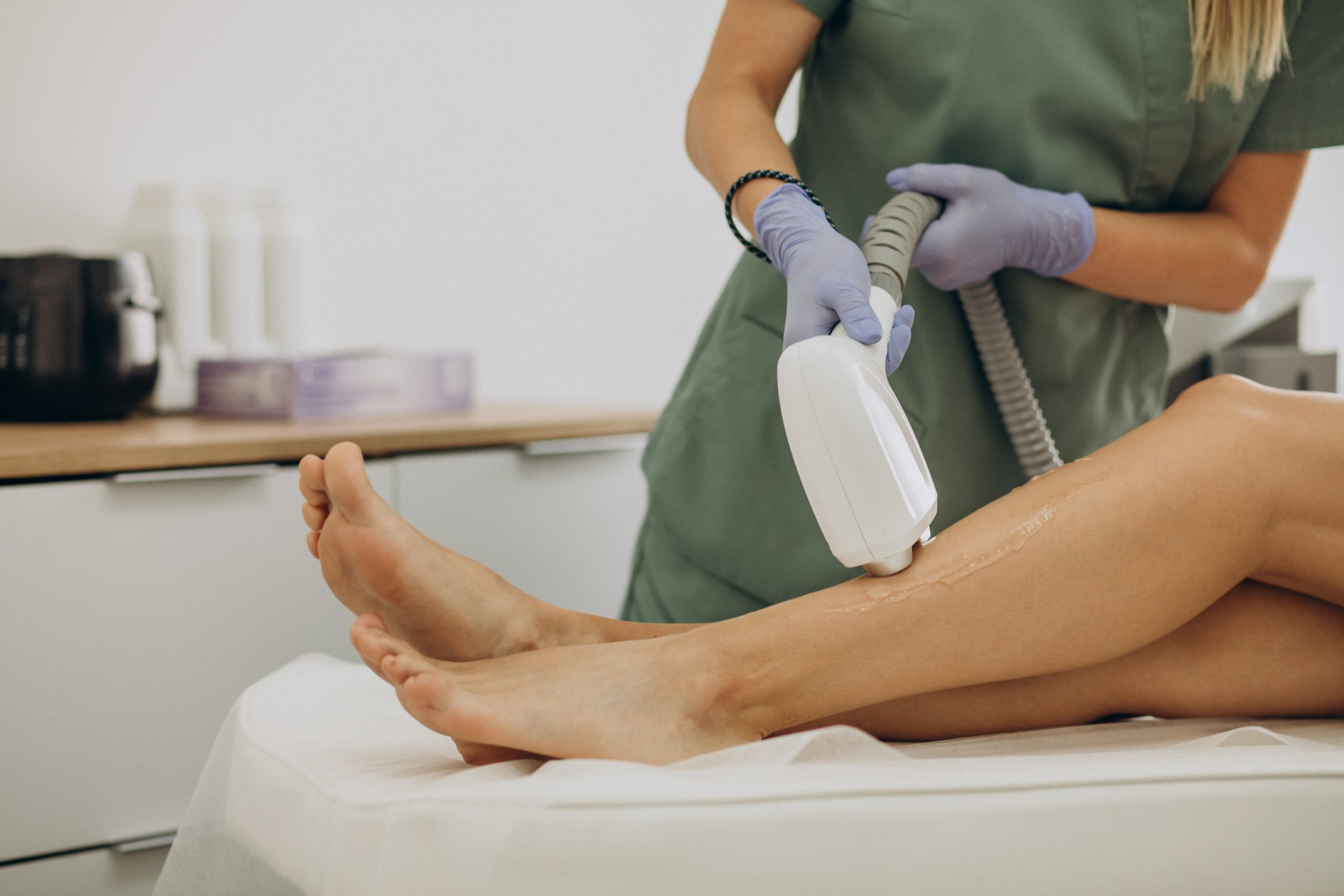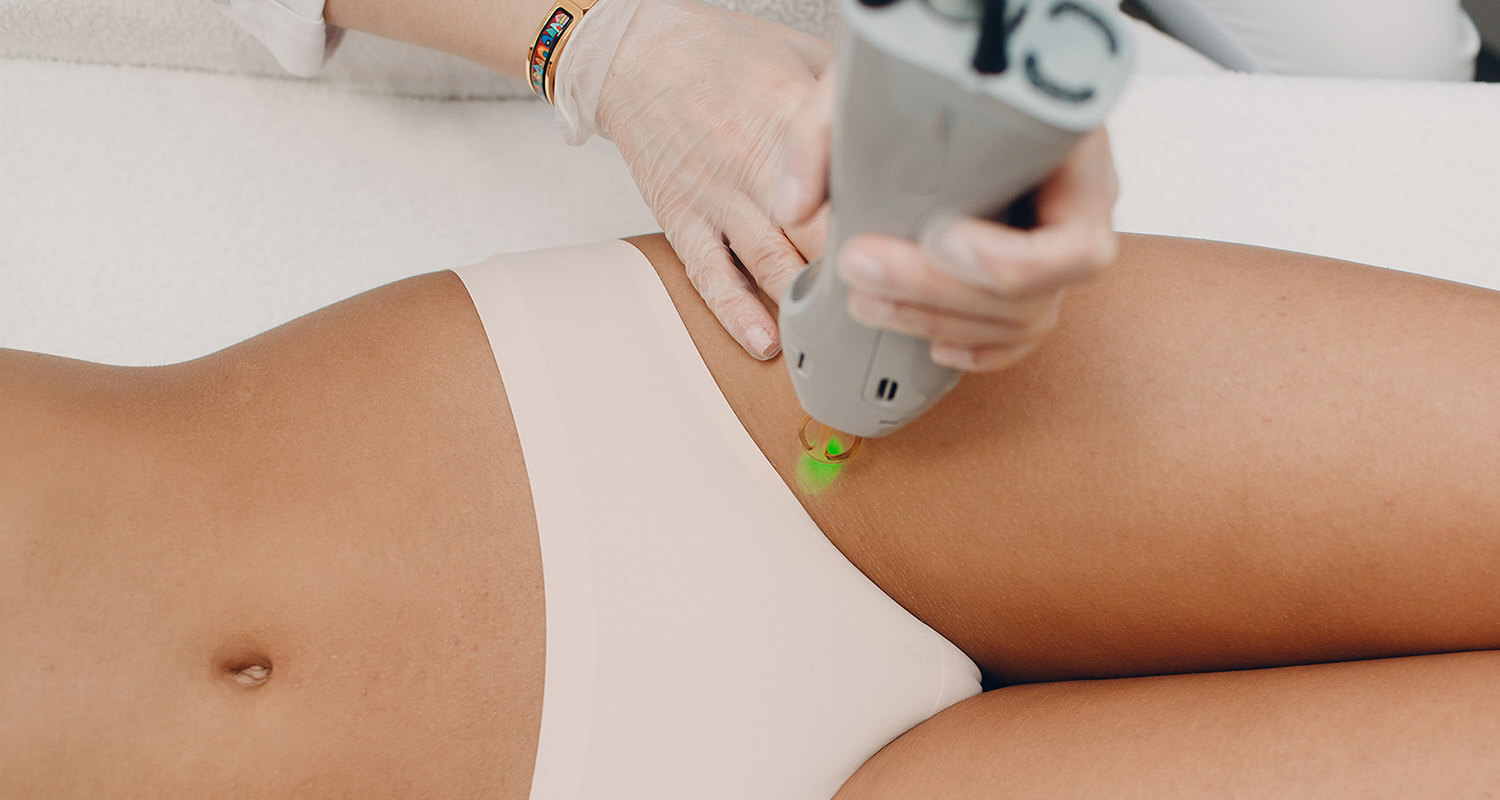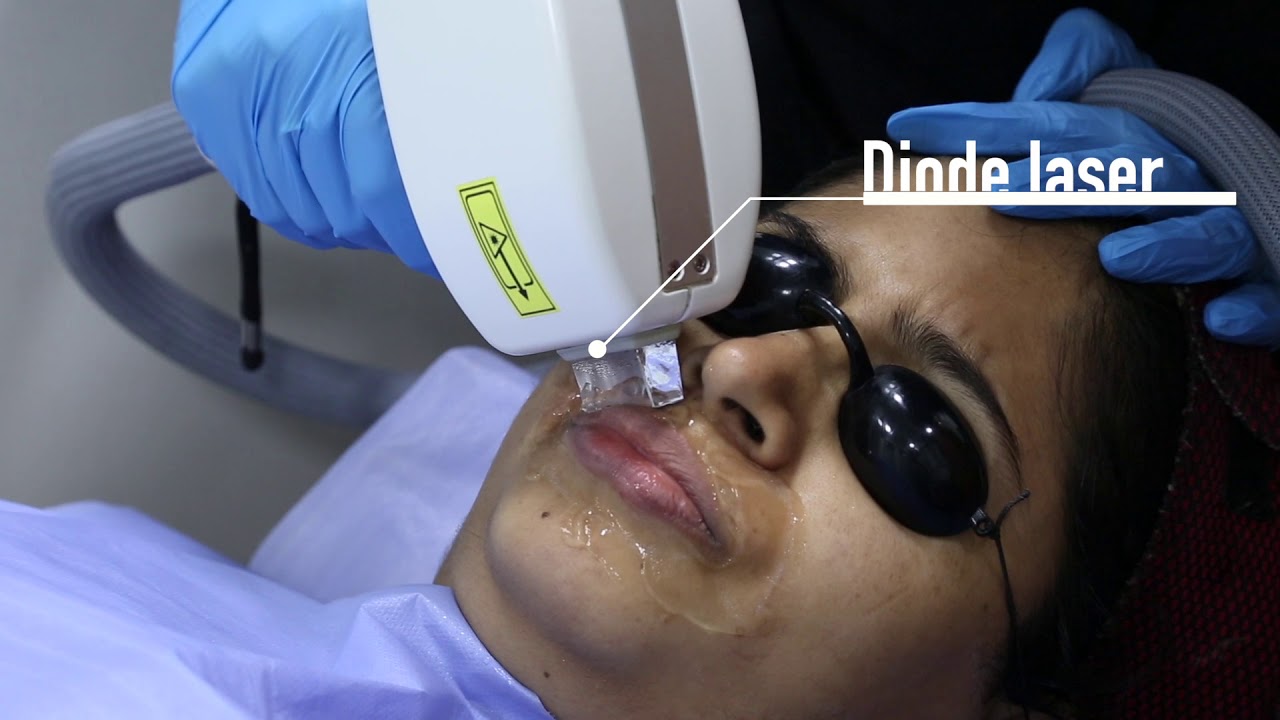

FAQs
What Are Side Effects Of Laser Hair Removal
Modified: August 2, 2023
Discover the potential side effects of laser hair removal and get answers to general questions about this popular procedure. Find out what you need to know before stepping into the treatment room.
(Many of the links in this article redirect to a specific reviewed product. Your purchase of these products through affiliate links helps to generate commission for Under-tec.com, at no extra cost. Learn more)
Table of Contents
Introduction
Are you tired of dealing with unwanted hair and considering laser hair removal as a solution? Laser hair removal is a popular method for removing hair permanently or significantly reducing its growth. It offers a convenient alternative to traditional hair removal methods like shaving, waxing, or plucking. However, before diving into the world of laser hair removal, it’s crucial to understand the potential side effects that may accompany this procedure.
Laser hair removal works by directing a concentrated beam of light onto the hair follicles, which damages them and inhibits future hair growth. While the procedure is generally considered safe and effective, it’s not without its risks. It’s essential to fully comprehend the possible side effects and take appropriate precautions to ensure a positive experience.
In this article, we will explore the common side effects of laser hair removal, both temporary and permanent, as well as precautions and safety measures to minimize any potential risks. By being well-informed, you can make informed decisions and have realistic expectations about the outcomes of laser hair removal.
Understanding Laser Hair Removal
Laser hair removal is a cosmetic procedure that uses laser technology to target and remove unwanted hair. The procedure involves the use of a laser device that emits a concentrated beam of light. This light is absorbed by the pigment, or melanin, in the hair follicles, gradually damaging them and inhibiting future hair growth.
It’s important to note that laser hair removal is most effective on dark, coarse hair as the high contrast between the hair and the surrounding skin makes it easier for the laser to target the follicles. People with light hair may not experience the same level of success with laser hair removal.
This procedure can be performed on various parts of the body, including the face, legs, bikini area, underarms, and back. The number of sessions required for optimal results may vary depending on factors such as hair thickness, skin type, and the desired outcome.
It’s essential to consult with a qualified and experienced healthcare professional or dermatologist to determine if laser hair removal is the right choice for you. They will evaluate your individual needs and offer personalized advice based on factors such as skin tone, hair color, and medical history.
It’s also crucial to understand that laser hair removal is not a one-time solution. The treatment works best when hair is in the active growth phase, so multiple sessions are typically necessary to achieve long-lasting results. The exact number of sessions can vary, but most people require anywhere from 6 to 8 treatments, spaced a few weeks apart, to see the desired outcome.
It’s important to have realistic expectations when undergoing laser hair removal. While the procedure can significantly reduce hair growth, it’s unlikely to lead to complete hair removal. Most people experience a gradual reduction in hair density, resulting in thinner, lighter, and finer hair.
Common Side Effects of Laser Hair Removal
Like any medical procedure, laser hair removal comes with potential side effects. While most side effects are temporary and mild, it’s important to be aware of them before undergoing treatment. By understanding the possible side effects, you can make an informed decision and take necessary precautions.
1. Redness and Irritation: Immediately after the laser treatment, you may experience redness and mild irritation in the treated area. This is a common side effect and typically resolves within a few hours or days. Applying aloe vera gel or a cold compress can help alleviate discomfort.
2. Swelling: Some individuals may experience temporary swelling around the hair follicles after the procedure. This is usually mild and should subside within a few hours or days.
3. Skin Discoloration: Laser hair removal may cause temporary skin discoloration, especially in people with darker skin tones. This is known as hyperpigmentation or hypopigmentation. In most cases, the discoloration fades over time, but it’s essential to protect the treated area from the sun and follow post-treatment care instructions.
4. Itching: Itching is a common side effect that can occur during the healing process. Avoid scratching the treated area and use a gentle moisturizer to keep the skin hydrated.
5. Blistering and Burns: Although rare, laser hair removal can sometimes cause blistering or burns. This is more likely to occur if the laser is not properly calibrated or if the treatment is performed by an inexperienced practitioner. It’s crucial to choose a reputable clinic or healthcare professional to minimize the risk of complications.
It’s important to note that these side effects are typically temporary and subside on their own. If you experience severe or persistent side effects, it’s essential to seek medical attention immediately.
While uncommon, there is also a risk of more serious side effects with laser hair removal. These include scarring, infection, and changes in skin texture. However, these complications are extremely rare when the procedure is performed by a qualified professional and proper aftercare is followed.
By understanding the common side effects associated with laser hair removal, you can make a well-informed decision and take the necessary precautions to minimize any potential risks. It’s crucial to discuss any concerns or preexisting conditions with your healthcare professional before undergoing treatment.
Temporary Side Effects
Laser hair removal is generally a safe procedure with minimal risks, but it’s important to be aware of the potential temporary side effects that may occur after treatment. These side effects are typically mild and subside on their own within a short period of time.
1. Redness and Swelling: It is common to experience redness and swelling in the treated area immediately after laser hair removal. This is a temporary reaction to the laser energy and typically resolves within a few hours to a couple of days. Applying a cool compress or aloe vera gel can help soothe the skin and reduce redness and swelling.
2. Sensitivity and Irritation: Following laser hair removal, you may experience increased sensitivity and irritation in the treated area. This can manifest as a mild burning or tingling sensation. It is important to avoid hot showers, excessive sweating, and the use of harsh skincare products or exfoliants until the skin has fully recovered.
3. Itching: Itching is a common temporary side effect that may occur as the hair follicles recover. However, it is important to avoid scratching the treated area as it can lead to further irritation or infection. Applying a gentle, fragrance-free moisturizer can help alleviate itching and keep the skin hydrated.
4. Blistering and Crusting: In some cases, laser hair removal can cause blistering or crusting of the skin. This is more likely to occur if the laser settings are too high or if the treated area is not properly cared for after the procedure. It is important to avoid picking at any blisters or scabs that may form and to keep the area clean and moisturized.
5. Changes in Pigmentation: Temporary changes in skin pigmentation, such as darkening or lightening of the skin, may occur after laser hair removal. These changes are usually temporary and fade over time. It is important to protect the treated area from sun exposure and to use sunscreen with a high SPF to minimize the risk of pigmentation changes.
It is important to note that these temporary side effects are typically mild and subside on their own within a few days to a couple of weeks. However, if you have any concerns or if the side effects persist or worsen, it is important to consult with your healthcare professional for further evaluation and guidance.
By understanding the temporary side effects associated with laser hair removal, you can have realistic expectations and take the necessary steps to care for your skin during the recovery process.
Permanent Side Effects
In rare cases, laser hair removal may result in permanent side effects. While these instances are uncommon, it’s important to be aware of them before undergoing treatment.
1. Scarring: Laser hair removal carries a small risk of scarring, particularly for individuals with sensitive skin or those prone to keloid formation. It’s crucial to choose a qualified and experienced professional who can determine the appropriate laser settings for your specific skin type to minimize the risk of scarring.
2. Skin Discoloration: In some cases, laser hair removal can lead to permanent skin discoloration, such as hyperpigmentation (darkening of the skin) or hypopigmentation (lightening of the skin). This risk is higher for individuals with darker skin tones. Protecting the treated area from sun exposure and following post-treatment care instructions can help reduce the likelihood of long-term discoloration.
3. Changes in Skin Texture: Laser hair removal can occasionally cause changes in skin texture, resulting in a bumpy or uneven appearance. This is more likely to happen if the laser is not properly calibrated or if the treatment is performed incorrectly. Choosing a reputable practitioner with experience in performing laser hair removal can help minimize the risk of texture changes.
4. Hair Growth Abnormalities: In rare cases, laser hair removal can lead to hair growth abnormalities, such as hair that becomes thicker or darker in the treated area. This is known as paradoxical hypertrichosis. While the exact cause is not fully understood, this side effect is more common in individuals with hormonal imbalances or certain medical conditions.
It’s important to note that these permanent side effects are rare and typically occur when the procedure is performed by an inexperienced practitioner or when proper aftercare protocols are not followed. Choosing a reputable facility and ensuring that the treatment is conducted by a qualified professional can significantly reduce the risk of permanent side effects.
In some cases, individuals may have pre-existing conditions or characteristics that make them more susceptible to permanent side effects. It’s crucial to discuss any concerns or medical history with your healthcare professional before undergoing laser hair removal to ensure that the procedure is appropriate for you.
By understanding the potential for permanent side effects, you can make an informed decision and take the necessary precautions to minimize any risks associated with laser hair removal.
Precautions and Safety Measures
Laser hair removal is generally a safe procedure when performed by a qualified professional. However, it’s important to take certain precautions and follow safety measures to minimize the risk of complications and ensure a successful treatment. Here are some important precautions and safety measures to keep in mind:
1. Choose a Qualified Professional: Select a reputable clinic or healthcare professional who is experienced and skilled in performing laser hair removal. Do your research, read reviews, and ask for recommendations from trusted sources to ensure you are in capable hands.
2. Consultation and Skin Assessment: Before undergoing laser hair removal, schedule a consultation with the practitioner. They will assess your skin type, hair color, medical history, and determine whether you are a suitable candidate for the procedure. This step is crucial in identifying any potential risks or concerns.
3. Follow Pre-treatment Guidelines: Your practitioner will provide you with specific pre-treatment instructions. These may include avoiding sun exposure, tanning beds, or self-tanning products prior to the procedure. It’s important to follow these guidelines to ensure optimal results and minimize the risk of complications.
4. Limit Sun Exposure: Exposure to the sun can increase the risk of side effects such as pigmentation changes. It’s important to protect the treated area from the sun by wearing sunscreen with a high SPF, protective clothing, and avoiding sun exposure, especially during peak hours.
5. Shave the Area: You will typically be instructed to shave the treatment area prior to the laser session. This helps ensure that the laser energy targets the hair follicles rather than the surface of the skin, reducing the risk of burns or other complications.
6. Follow Post-Treatment Care: After each laser hair removal session, your practitioner will provide you with specific post-treatment care instructions. This may include avoiding hot showers or baths, applying soothing creams or ointments, and avoiding excessive sweating, exfoliation, or harsh skincare products for a certain period of time.
7. Attend Scheduled Sessions: Laser hair removal requires multiple sessions to achieve optimal results. It’s crucial to attend all scheduled sessions and follow the recommended treatment plan. Skipping or delaying sessions can affect the effectiveness and may increase the risk of side effects.
8. Communicate Any Concerns: If you experience any unexpected or concerning side effects, it’s important to communicate with your practitioner immediately. They can evaluate the situation and provide appropriate guidance or adjustments to your treatment plan.
By following these precautions and safety measures, you can minimize the risk of complications and ensure a safe and successful laser hair removal experience. Remember to discuss any concerns or questions with your practitioner to address them before undergoing treatment.
Minimizing Side Effects
While laser hair removal is generally safe and well-tolerated, it’s important to take steps to minimize the potential side effects for a more comfortable and successful treatment. Here are some tips to help minimize side effects:
1. Choose a Qualified Professional: Selecting a reputable and experienced practitioner is crucial in minimizing the risk of side effects. Ensure that the practitioner is licensed and uses FDA-approved equipment for laser hair removal.
2. Follow Pre-treatment Guidelines: Your practitioner will provide you with specific pre-treatment instructions. These may include avoiding sun exposure, self-tanning products, or certain medications that can increase sensitivity to light. Adhering to these guidelines will help reduce the chances of side effects.
3. Optimal Laser Settings: Proper calibration of the laser is essential to ensure effective hair removal and reduce the risk of side effects. Your practitioner should analyze your skin type, hair color, and adjust the laser settings accordingly to maximize safety and efficacy.
4. Protect Your Skin from the Sun: Sun exposure after laser hair removal can increase the risk of side effects like hyperpigmentation. It’s crucial to protect the treated areas from UV radiation by wearing sunscreen with a high SPF, protective clothing, and staying in the shade when possible.
5. Moisturize and Soothe the Skin: Applying a gentle and fragrance-free moisturizer to the treated area can help keep the skin hydrated and alleviate any dryness or discomfort. Avoid irritants or harsh products that can further aggravate the skin.
6. Avoid Heat and Sweat: Excessive sweating and exposure to heat can worsen side effects. It’s important to avoid hot showers, saunas, steam rooms, and strenuous exercise for at least 24 to 48 hours after the procedure. This allows the skin to heal and reduces the risk of complications.
7. Skip Exfoliation: Refrain from using exfoliating scrubs or harsh cosmetic products that can irritate or damage the treated skin. Exfoliation can be resumed once the skin has fully healed and with the approval of your practitioner.
8. Be Patient and Follow the Treatment Plan: Laser hair removal requires multiple sessions to achieve optimal results. It’s important to attend all scheduled sessions and follow the recommended treatment plan. Consistency and adherence to the plan are key to minimizing side effects and obtaining the desired outcome.
9. Communicate with Your Practitioner: If you experience any concerning side effects or have any questions or concerns throughout the treatment process, it’s important to communicate openly with your practitioner. They can provide guidance, recommendations, and make necessary adjustments to ensure your safety and satisfaction.
By following these tips and guidelines, you can significantly minimize the risk of side effects associated with laser hair removal. Remember, everyone’s experience may vary, and it’s essential to work closely with your practitioner to ensure the best outcome for your specific circumstances.
Conclusion
Laser hair removal is a popular and effective method for removing unwanted hair and achieving long-term results. However, it’s crucial to be aware of the potential side effects that may accompany the procedure. While the majority of side effects are temporary and mild, there is a slight risk of more serious complications in rare cases.
By understanding the common and potential side effects of laser hair removal, you can make informed decisions, take necessary precautions, and ensure a safe and successful treatment. Temporary side effects such as redness, swelling, and skin irritation are common and typically subside on their own without intervention. However, it’s important to seek medical attention if you experience severe or persistent side effects.
Permanent side effects, although rare, can include scarring, changes in skin texture, and pigmentation issues. It’s important to choose a qualified professional and adhere to post-treatment care instructions to minimize the risk of these complications.
Taking precautionary measures such as choosing a reputable practitioner, following pre and post-treatment guidelines, protecting the skin from the sun, and communicating concerns with your practitioner can all help minimize side effects and promote a successful laser hair removal experience.
Remember, laser hair removal is not a one-size-fits-all solution, and results may vary depending on factors such as hair and skin type. It’s important to consult with a qualified professional to determine if laser hair removal is suitable for your individual needs and to ensure realistic expectations.
With proper research, preparation, and care, laser hair removal can be an effective and convenient solution for long-lasting hair reduction. By understanding and managing the potential side effects, you can achieve smoother, hair-free skin and boost your self-confidence.







